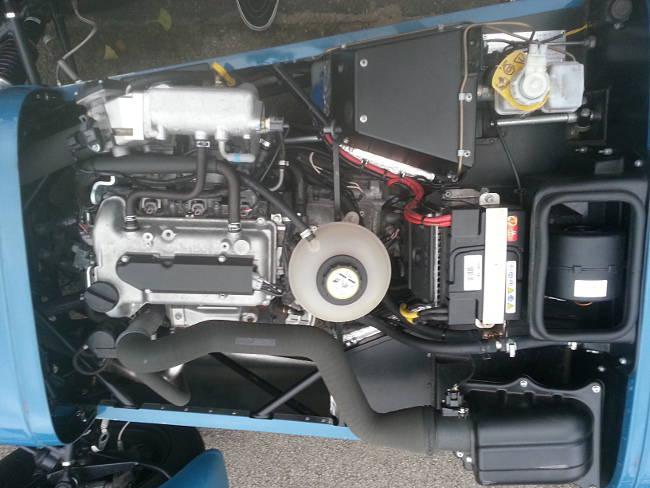This article is more than 1 year old
Caterham Seven 160 review: The Raspberry Pi of motoring
Back to driving's basics with a joyously legal high
This is not a car for the cossetted
That said, it isn’t exactly practical. Doors are an optional extra, and even if you have them there are no door pockets. A glovebox joins the long list of things the Seven eschews. There is a boot but it’s tiny and most of the time its half full of rolled-up roof. I did take it shopping but could only buy half what I would normally and even then I had to leave the roof at home.
Even if you can get what you want in it’s not secure as the cover is only fastened with poppers. That’s the same mechanism which is used to fasten the roof and doors making it very easy for anyone to get in.
While most convertibles will erect or drop their roof in seconds with the Seven it’s the work of minutes. How many minutes depends on how often you’ve done it before and how hard it’s raining: There is a metal frame to swing up; the roof has to be unrolled and spread across the frame; the poppers done up; and then the frame tensioned against the roof using straps, before part of the frame is wrapped in Velcro.
The top of the doors fits into a channel in the roof and the back of the doors covers the back of the hood. For all the Baden-Powellness of the operation it does work very well. In a pretty significant downpour it was both dry and snug.

Engine bay: If you want heat into the cab, that's an optional extra
The £300 heater is a vent from the engine bay – and even that is a £300 optional extra. There are two positions: “on” and “not-quite-on” where the heat from the engine bay soaks through. I’m told this is much more significant on bigger-engined Caterhams. Indeed, the only practicality box it ticks is fuel economy. Caterham claim 56mpg; I saw a little under 40mpg, which I would like to claim was down to hard driving but I suspect sitting in slow London traffic was the culprit here.
So with the roof up you are pretty well protected once you are in. Getting in without the roof is interesting, as you slide your feet into the footwell as you lower yourself in. Think of getting into a hot bath. With the roof on it’s an entirely different kettle of human origami. You slide one leg in, post your head across to the passenger side and then drag your right leg after you. If there is a passenger in place you spend a short period of time with your head against the passenger’s stomach or crotch. This is not a first date car. (oh yeah? Vulture Central's backroom gremlins)
In addition to the problems posed by getting into the Caterham, its very cool-looking exhaust runs along the passenger side with an opportunity for the passenger to be startled by it if he or she should inadvertently glance a shin across it – although on the 160 this didn’t seem to get hot enough to burn.
The bath analogy extends to the driving position. You relax into it; it’s very comfortable and everything falls amazingly well to hand. The small Momo steering wheel feels great but what is really well done is the way you can reach the necessary controls with your fingertips. The indicators and lights are all standard electrical toggle switches and the horn, a simple button, is just a finger stretch away.
Your view of the world changes. Being at patella height can be intimidating as even a Fiat 500 looms above you – or rewarding as a leggy blonde saunters past. You need to re-adjust to where to look for road signs and traffic lights are difficult when you have the roof on. When I had a VX220 the trick was to look at the reflection in the bonnet but this didn’t seem to work with the Seven.
